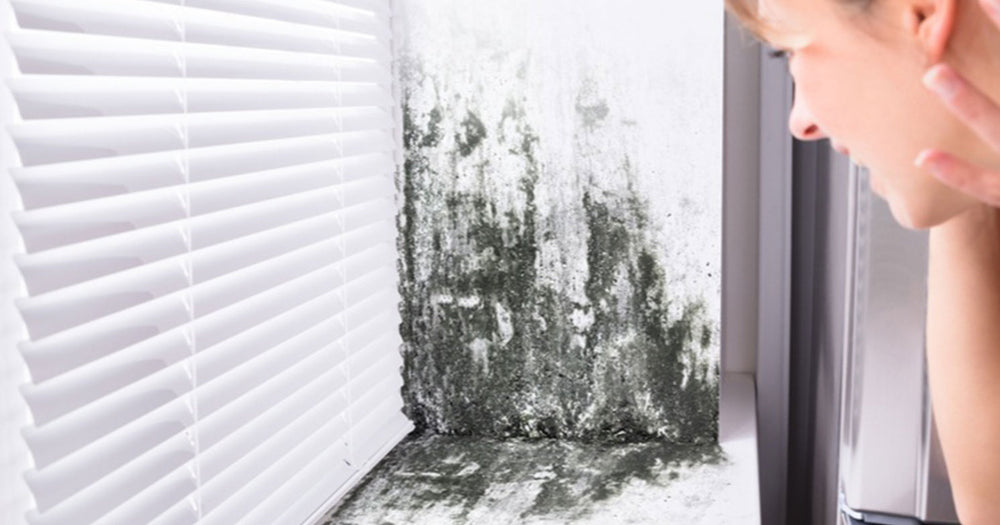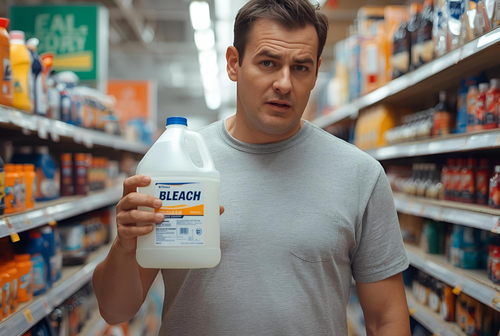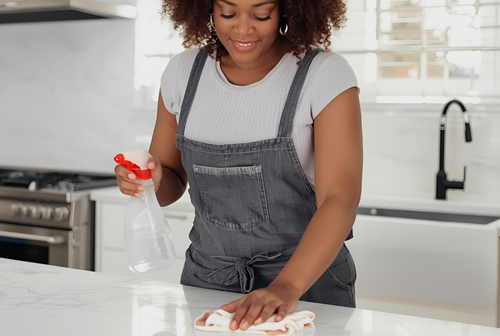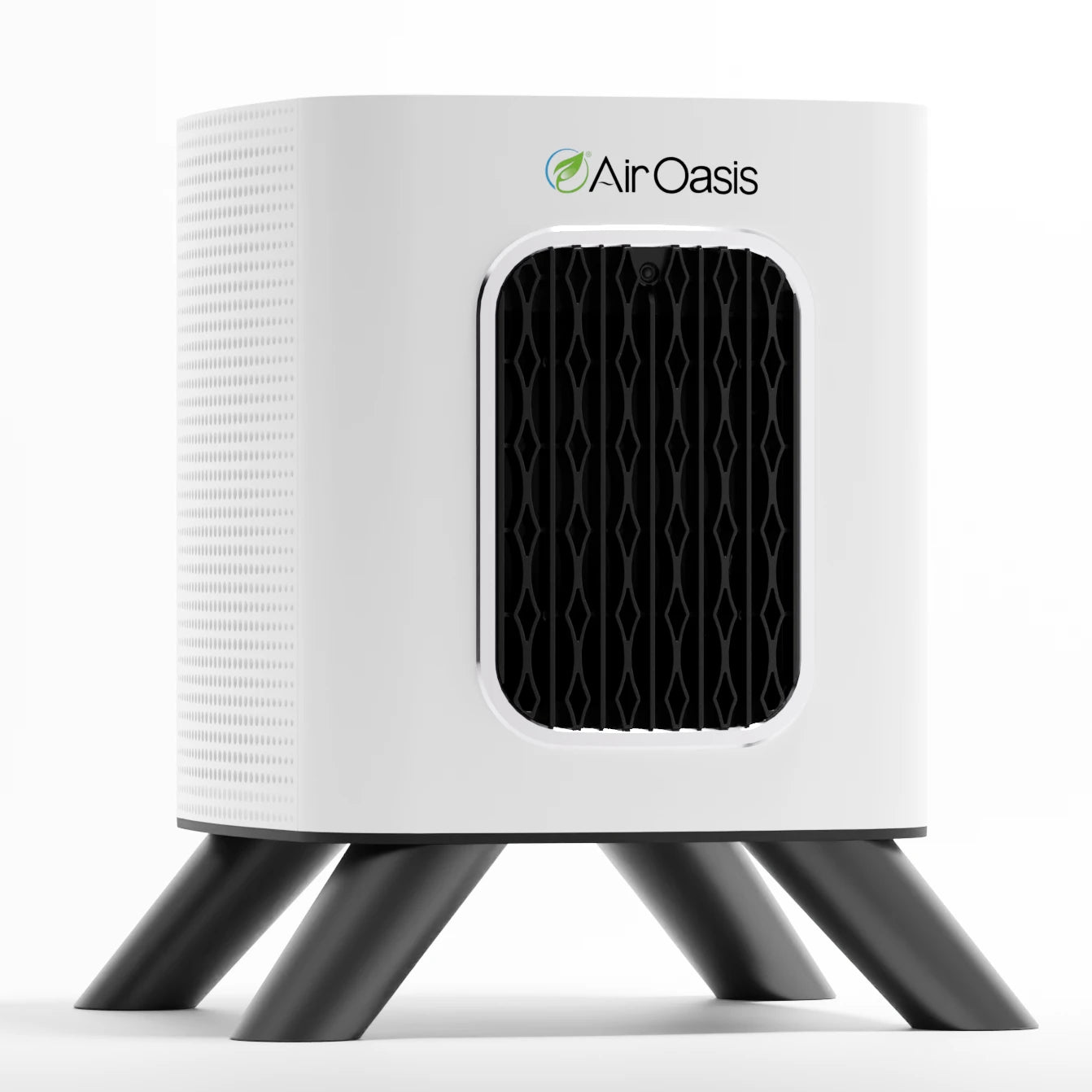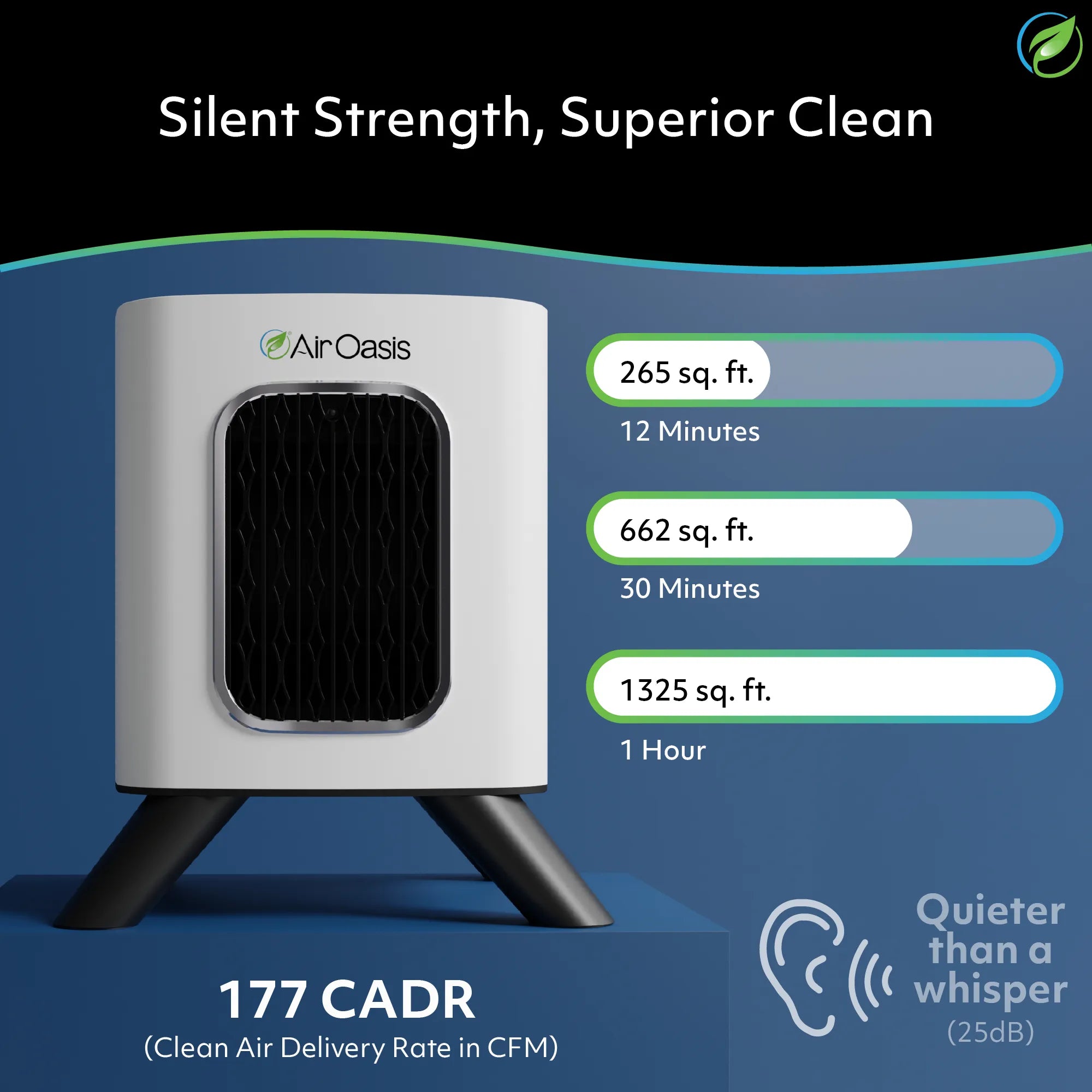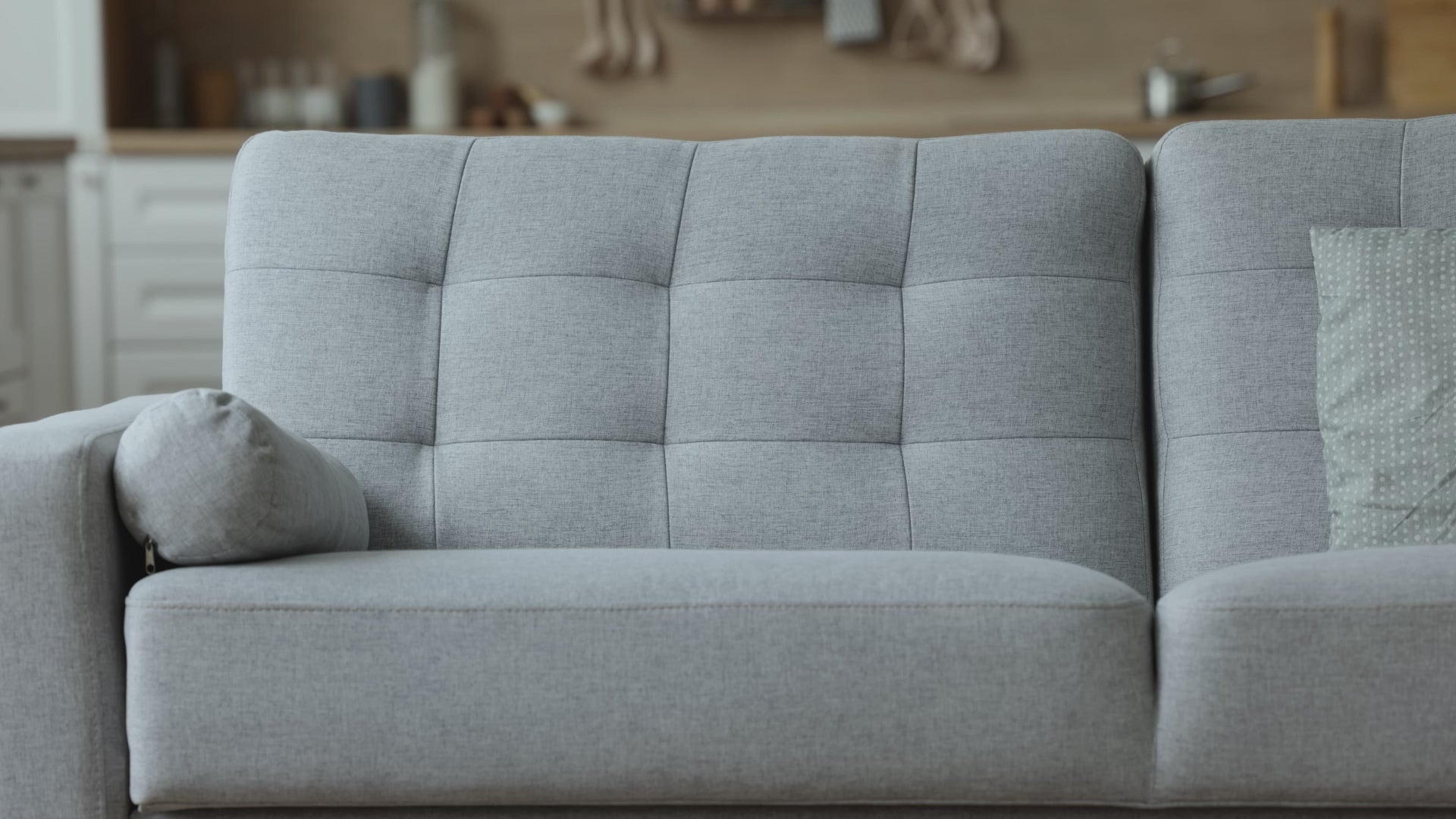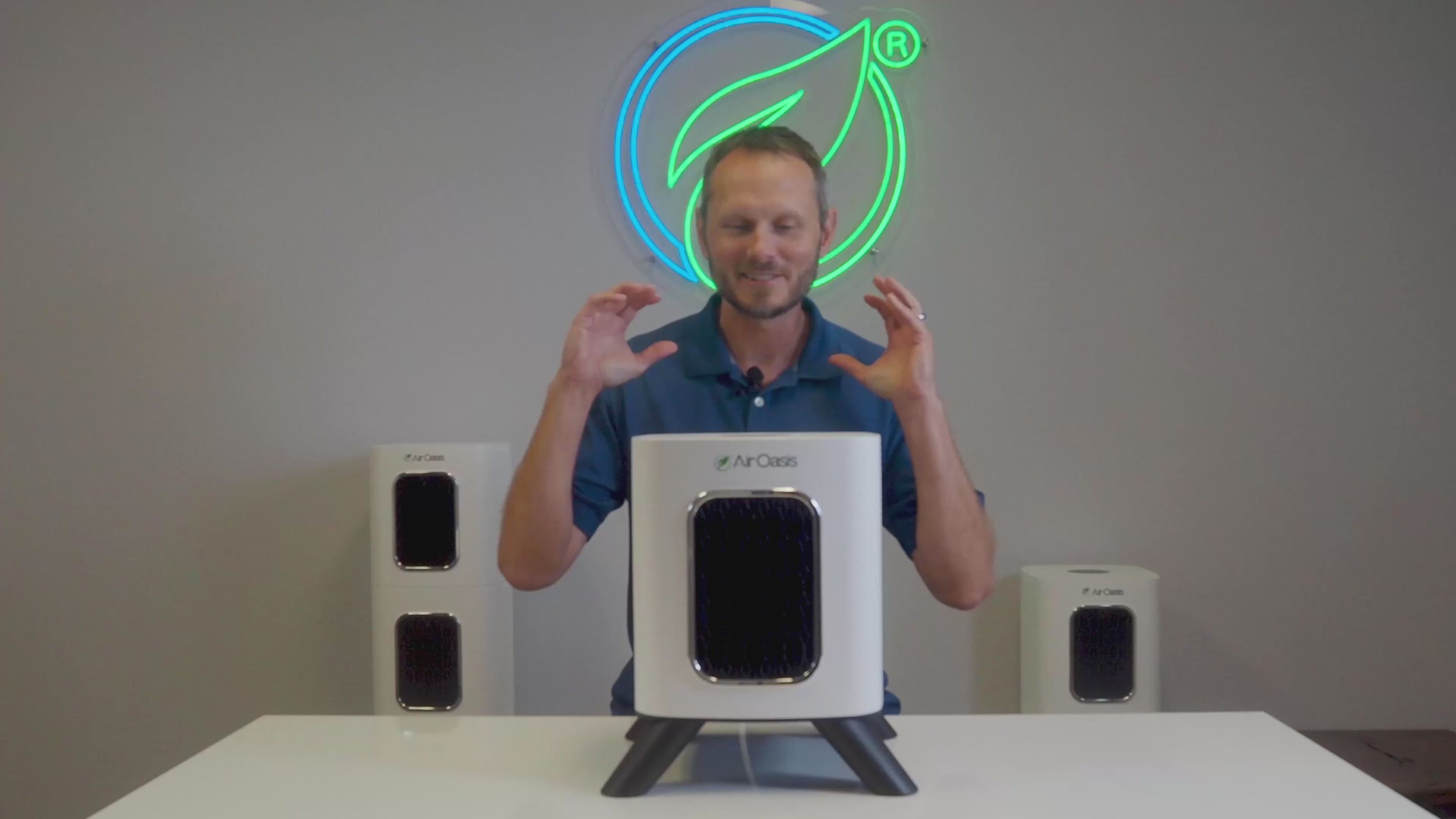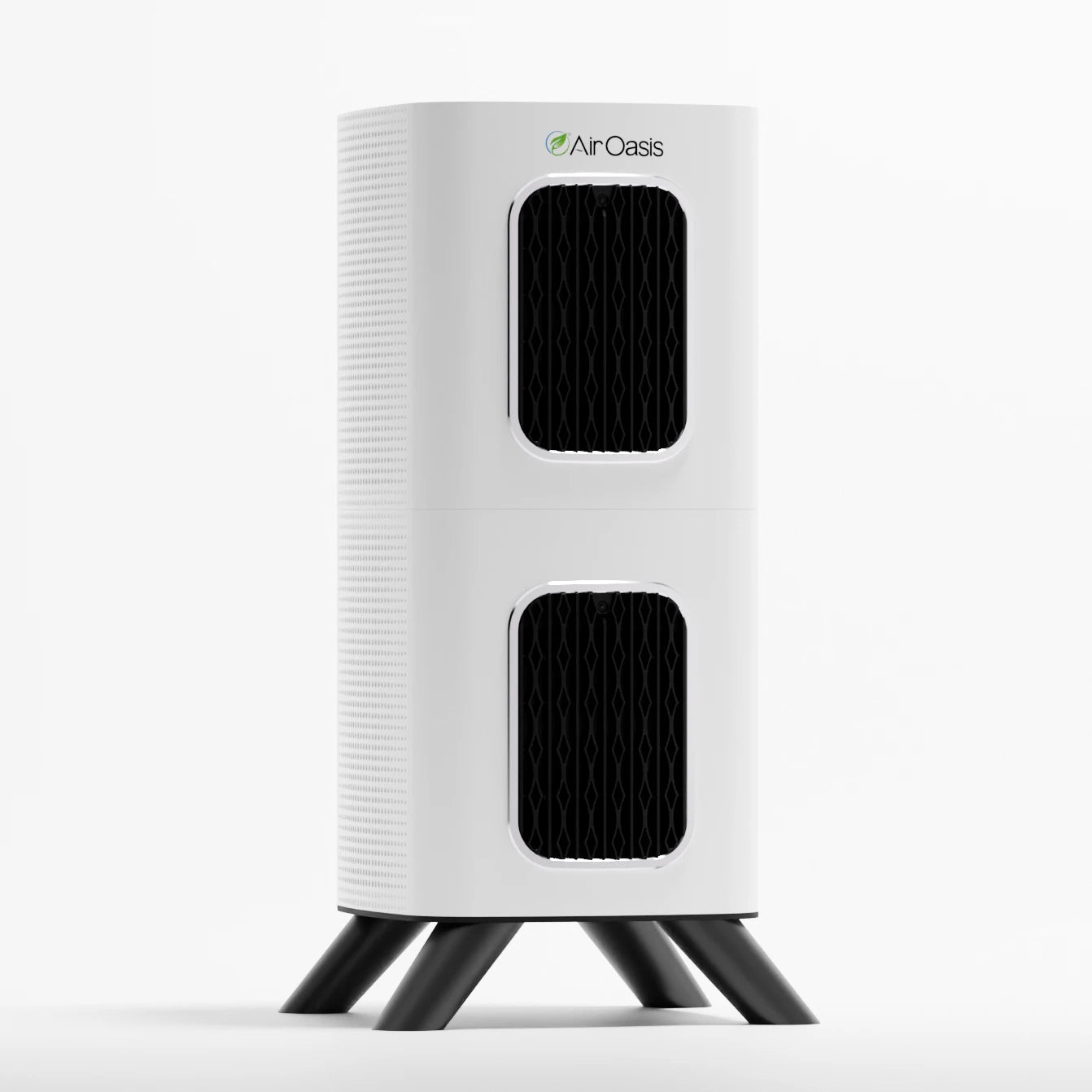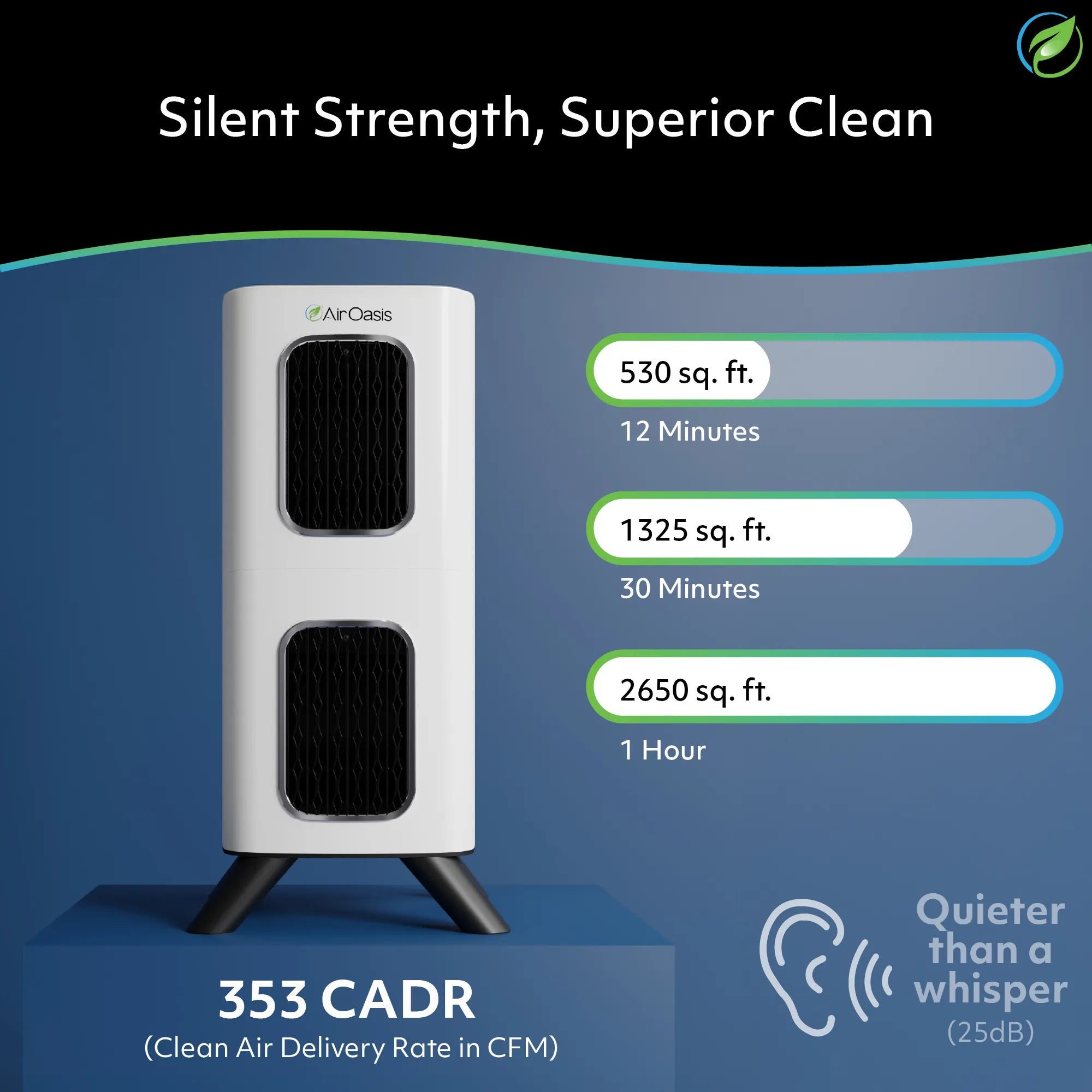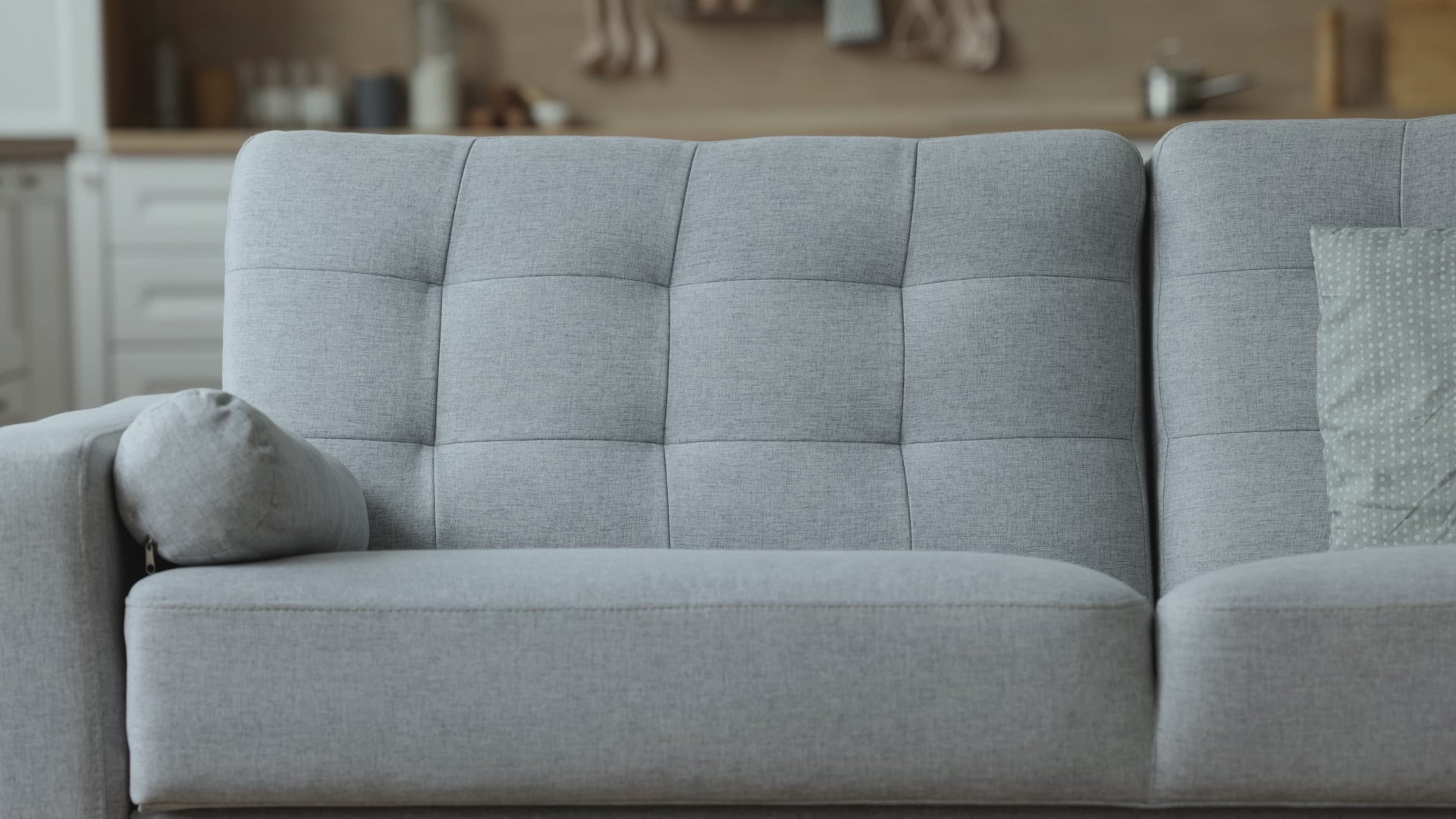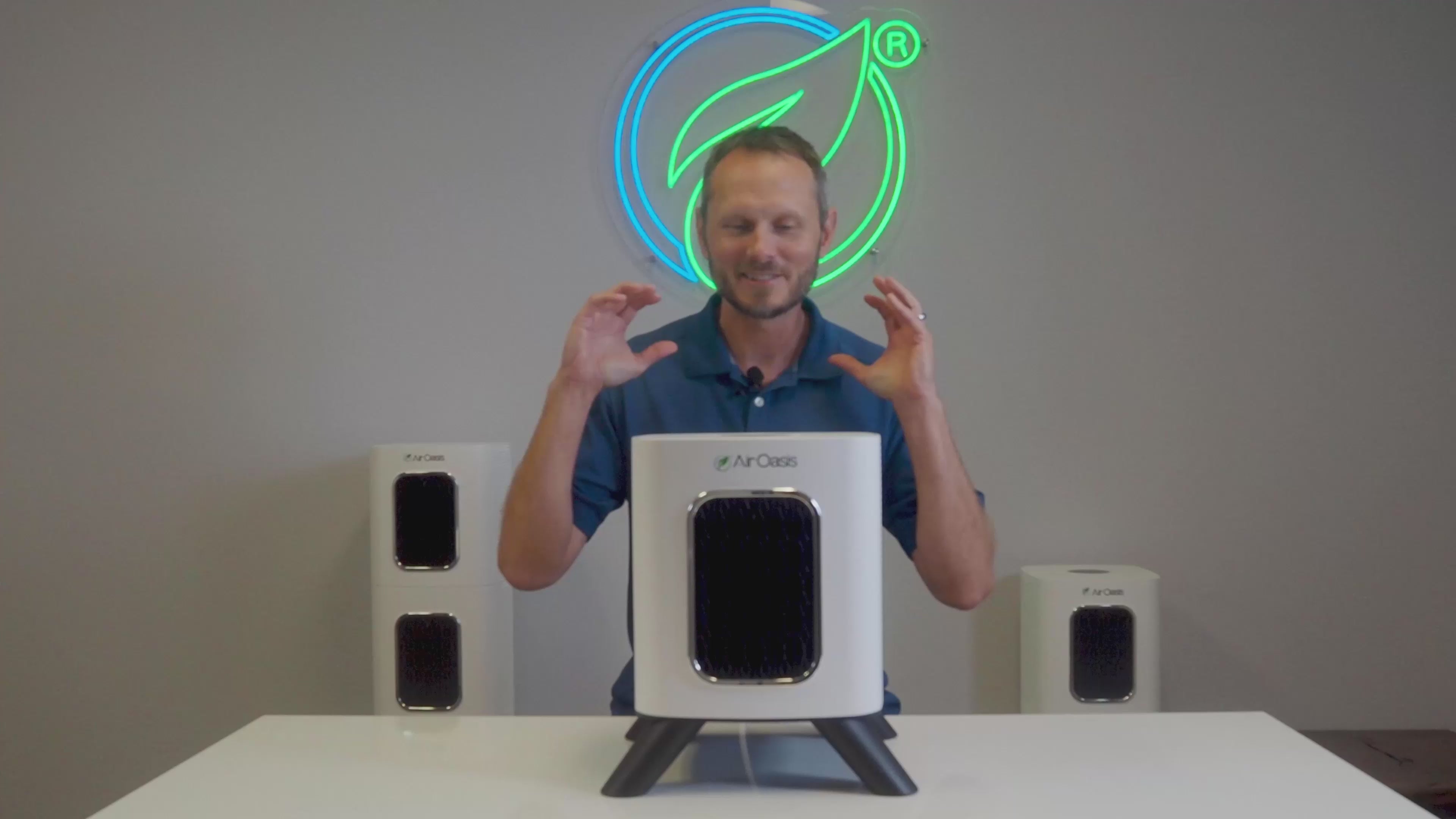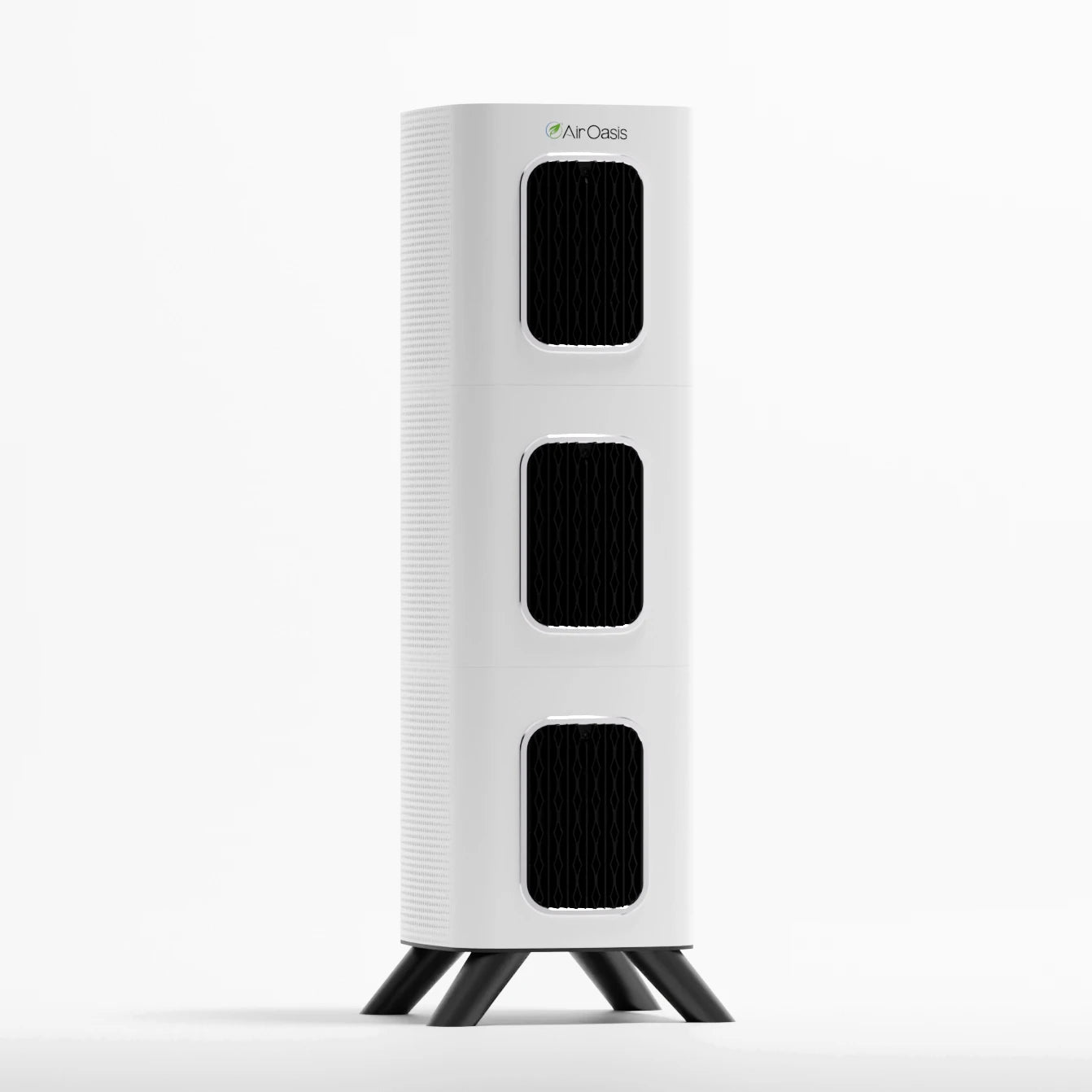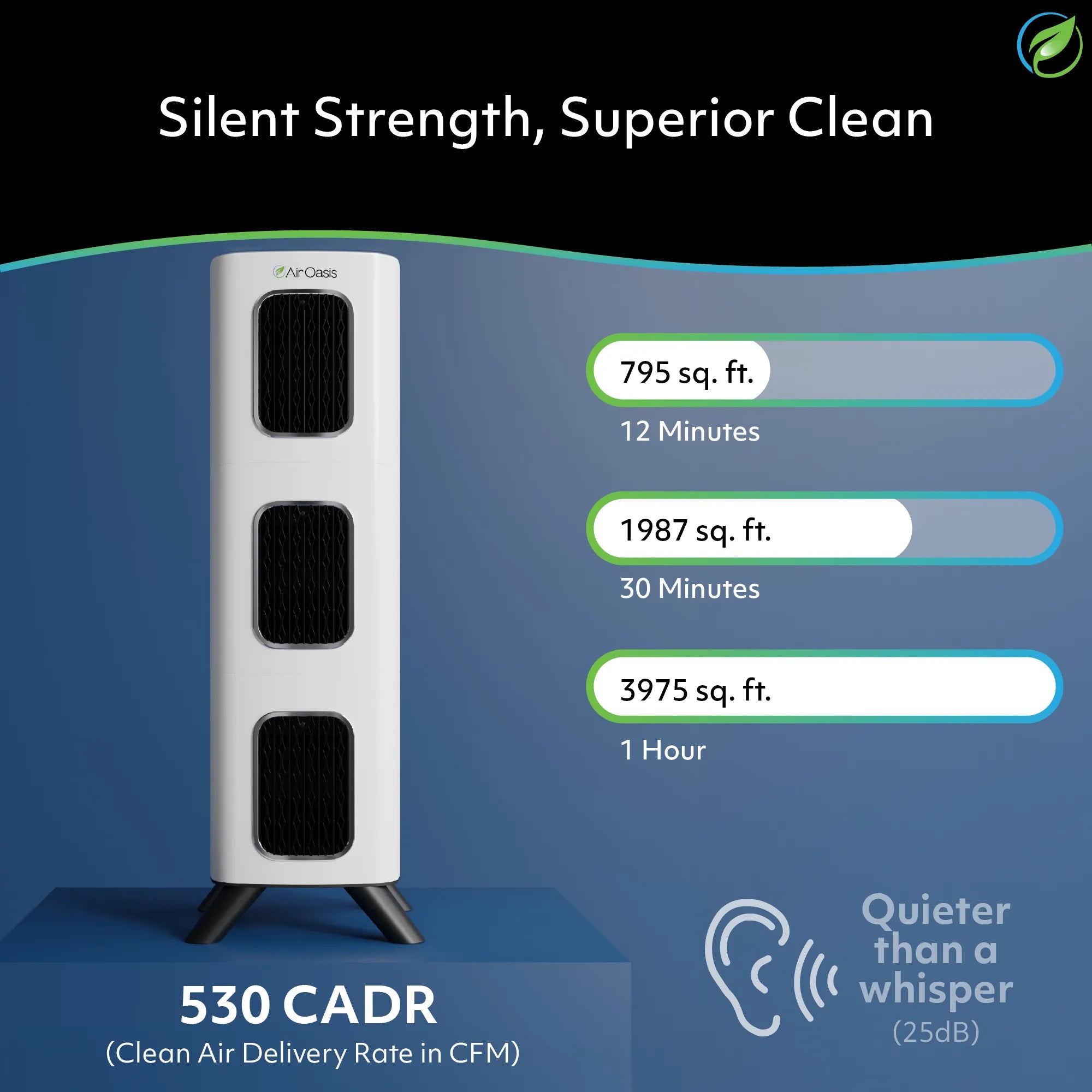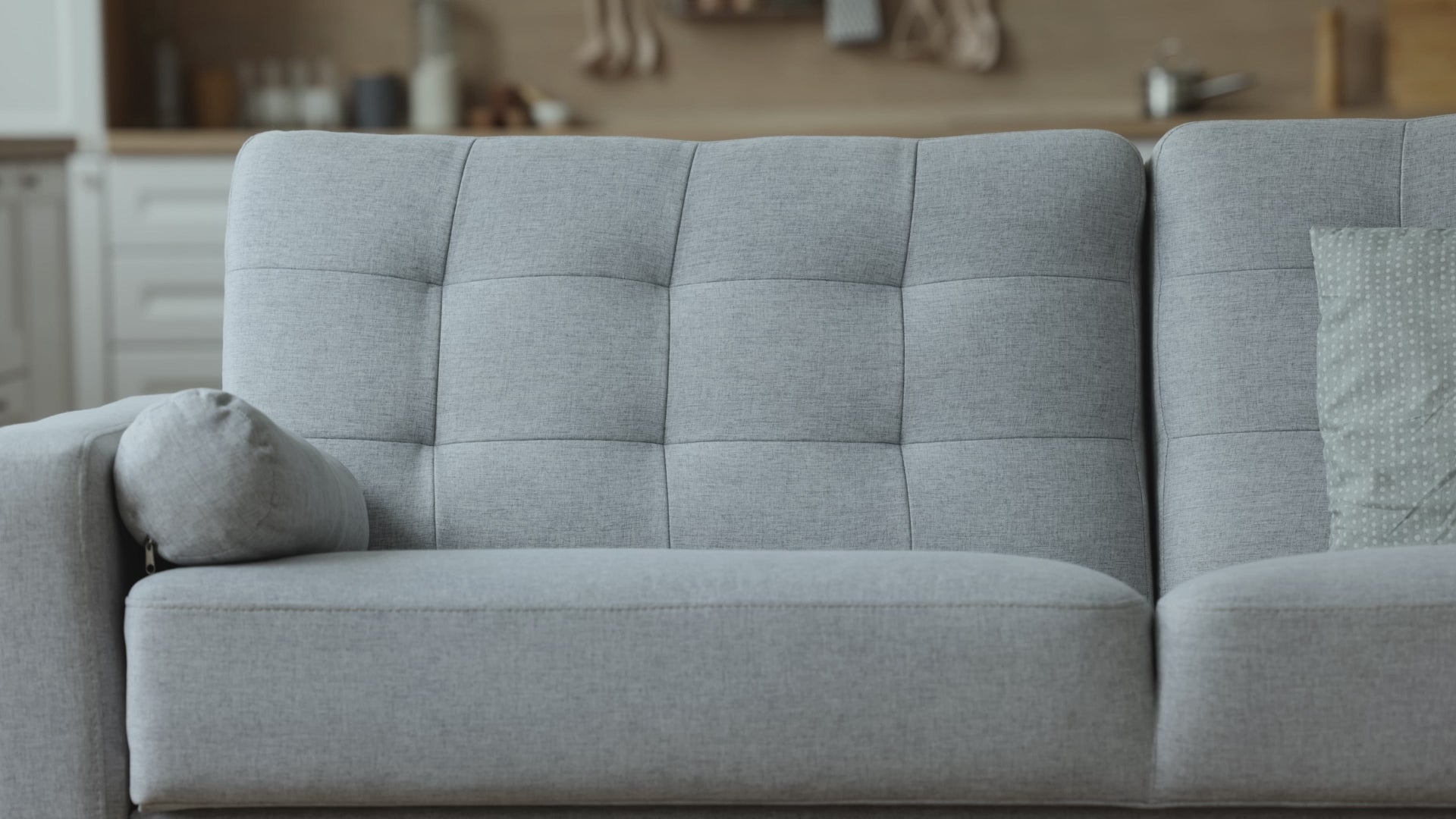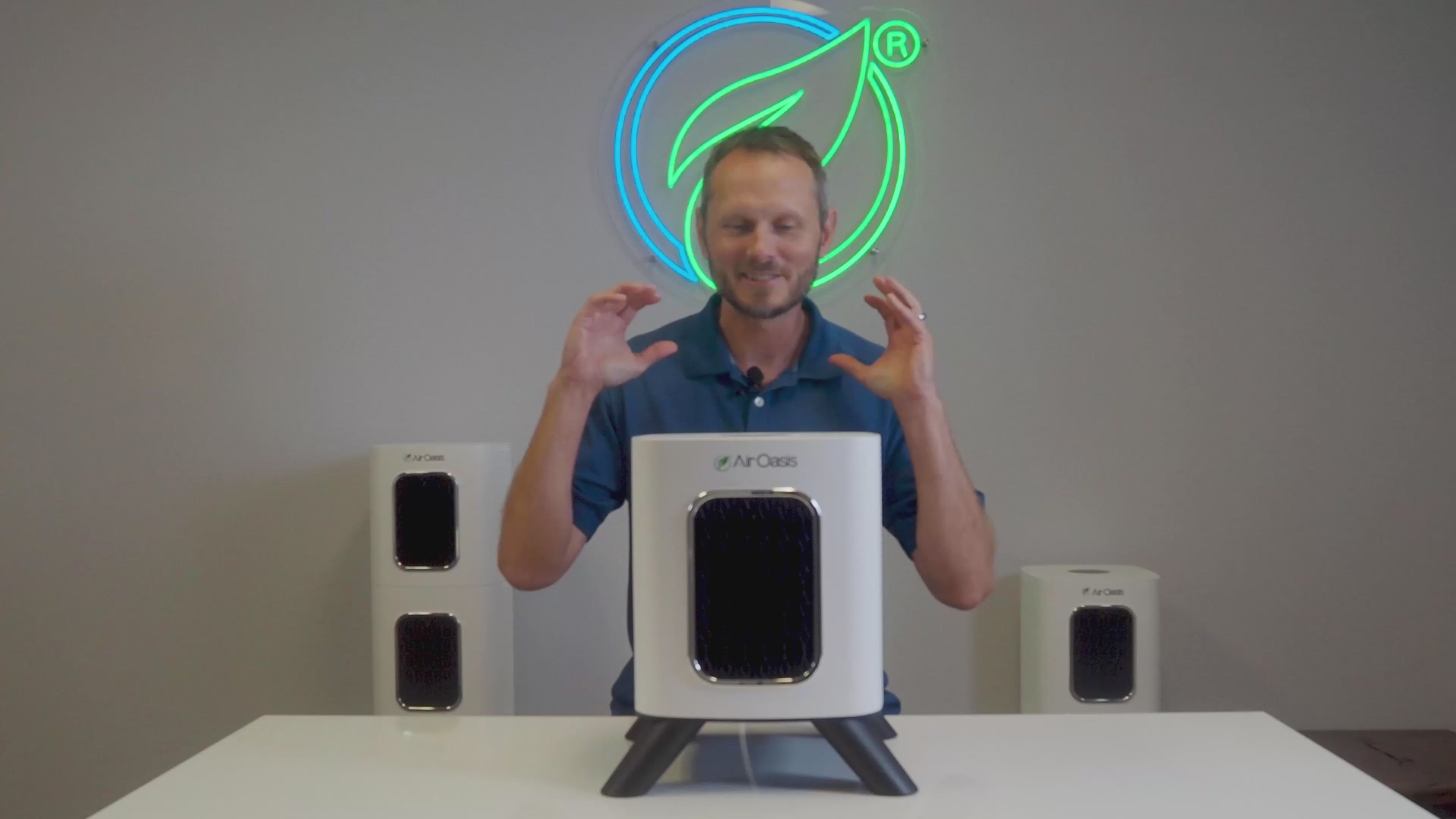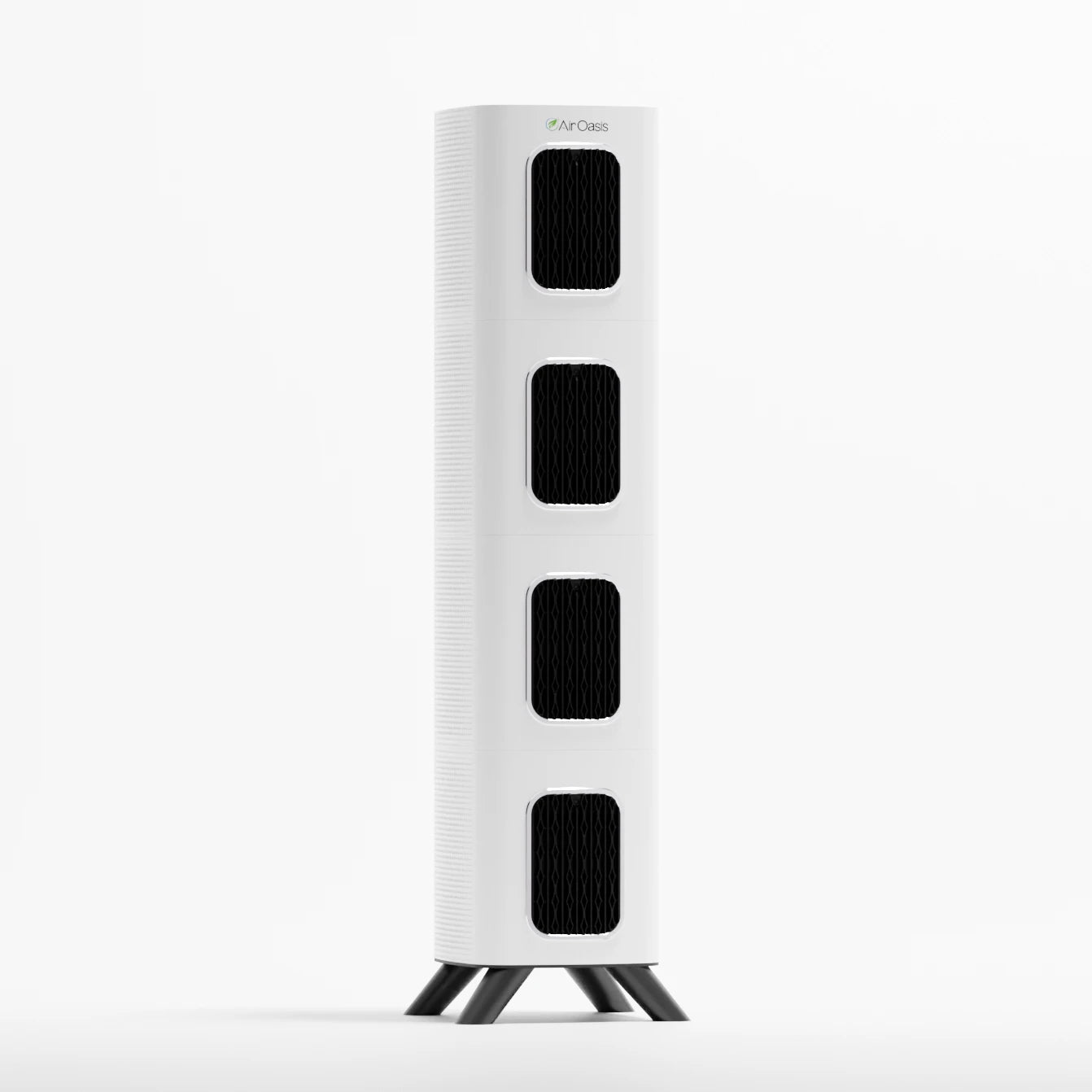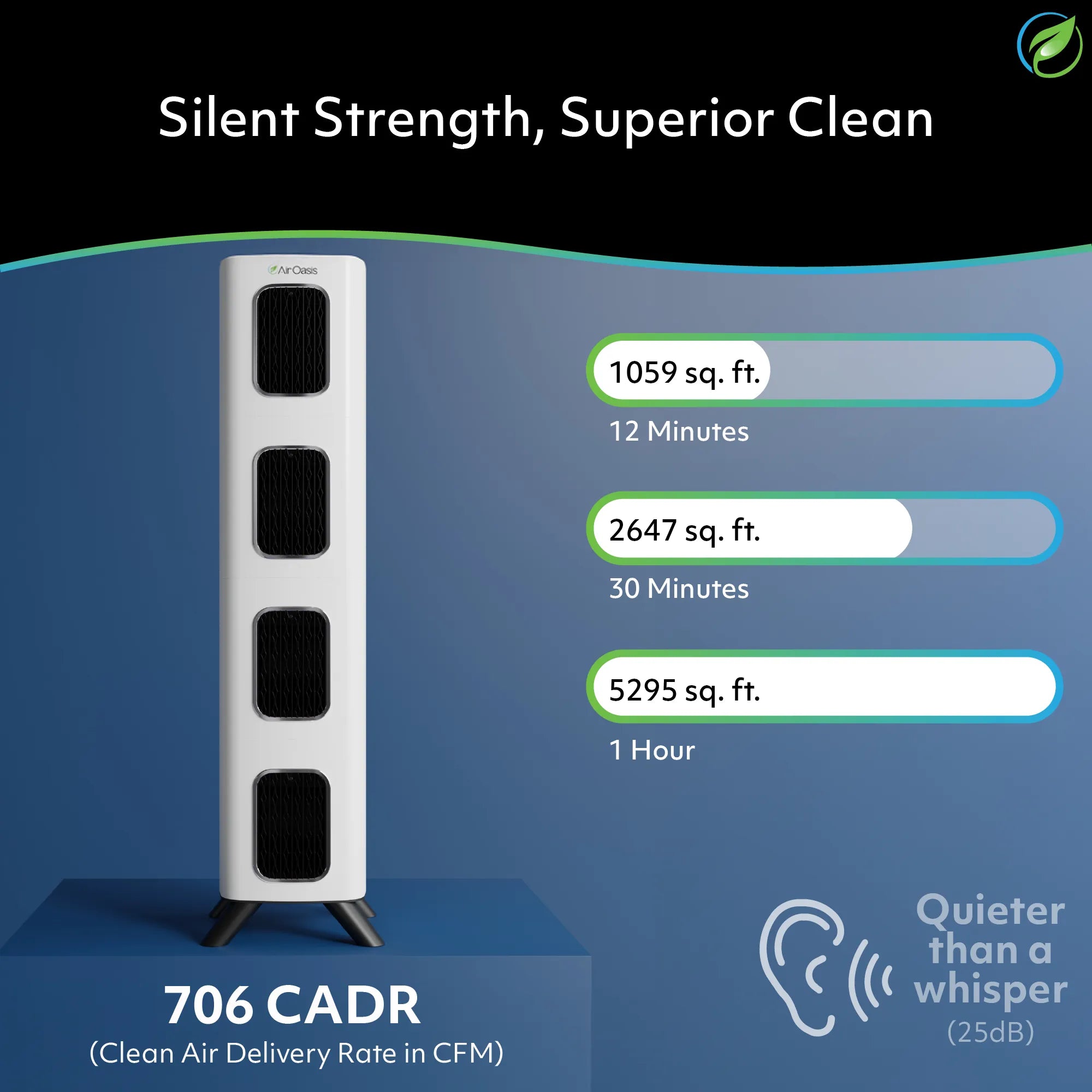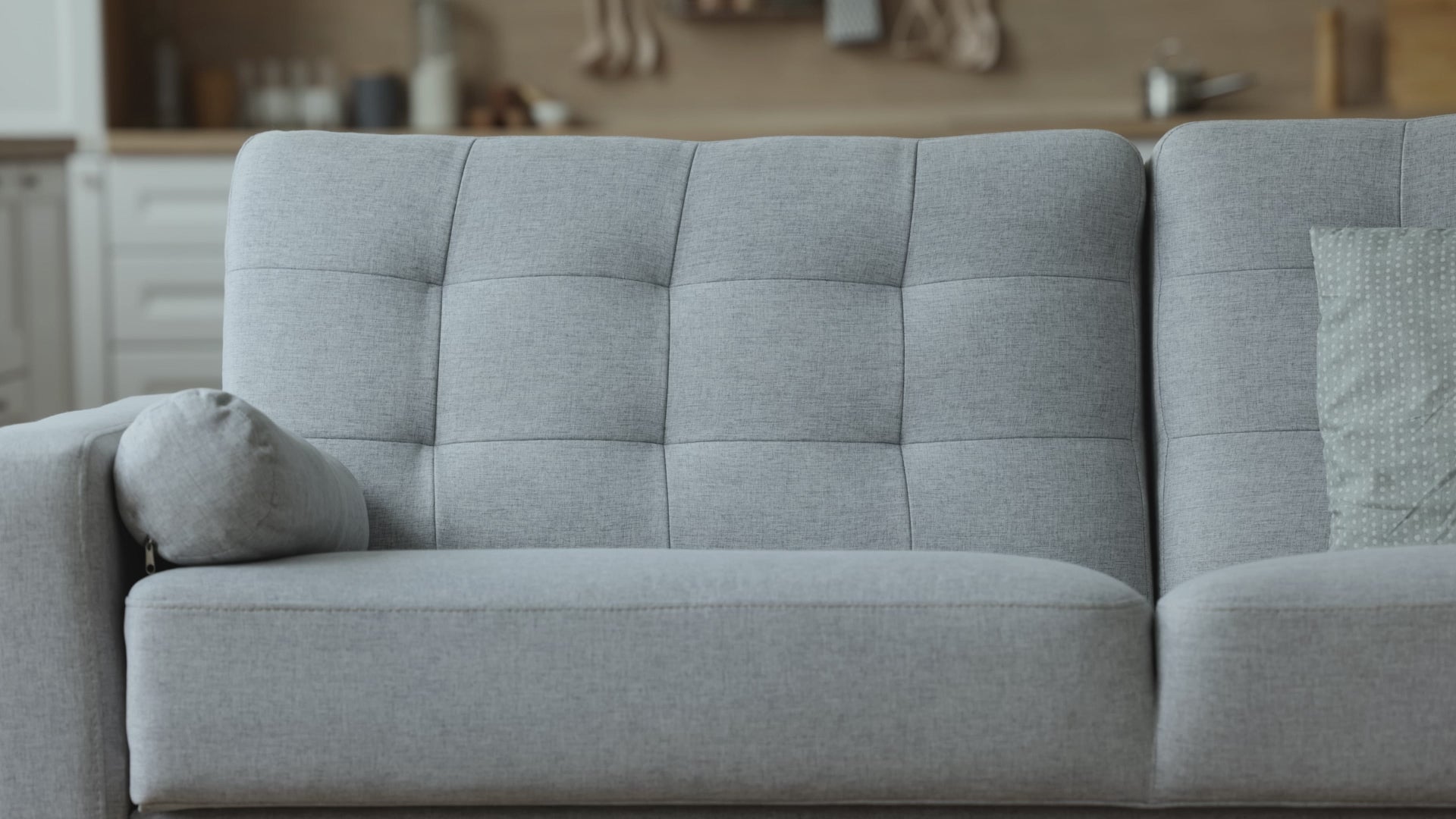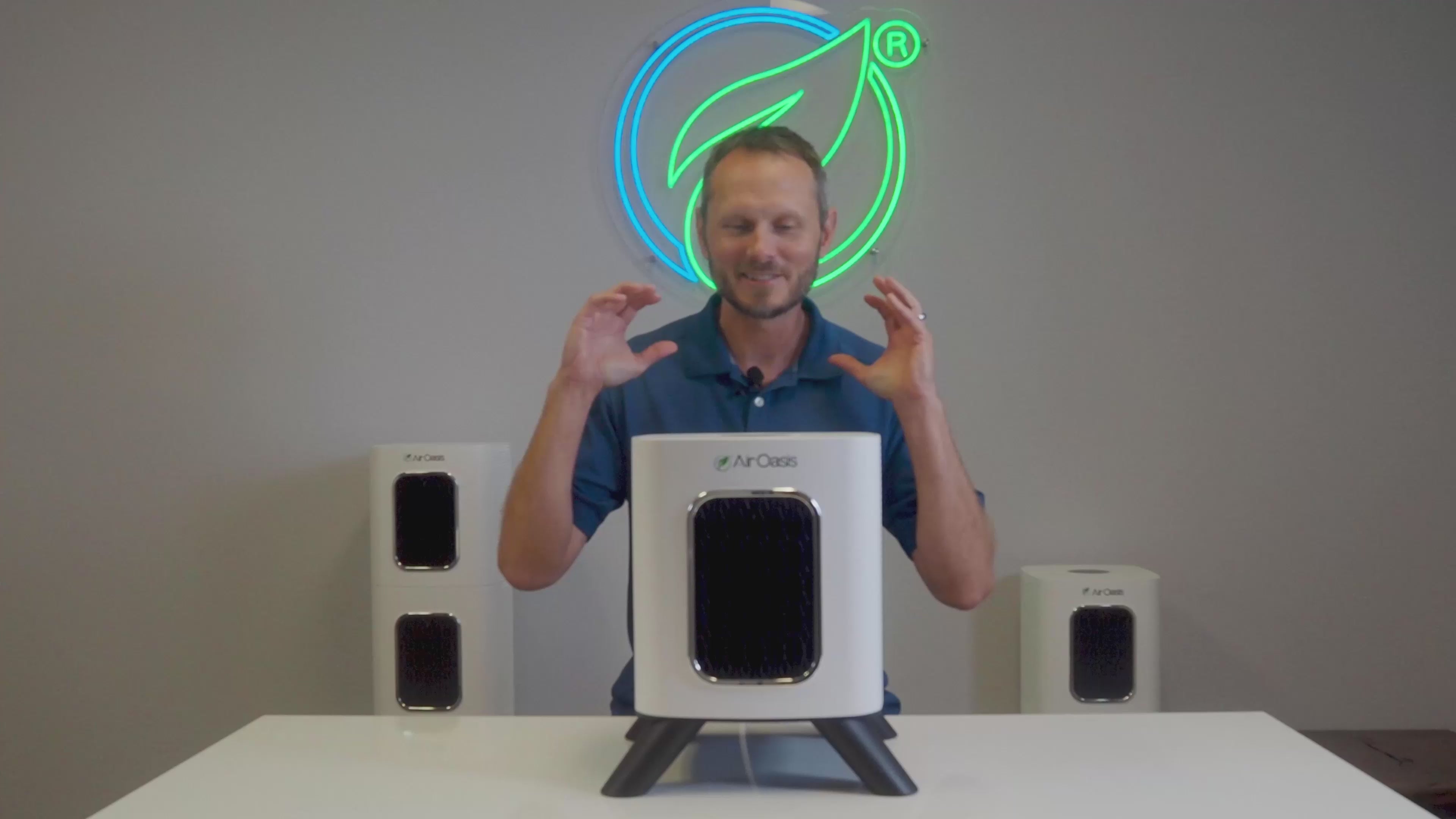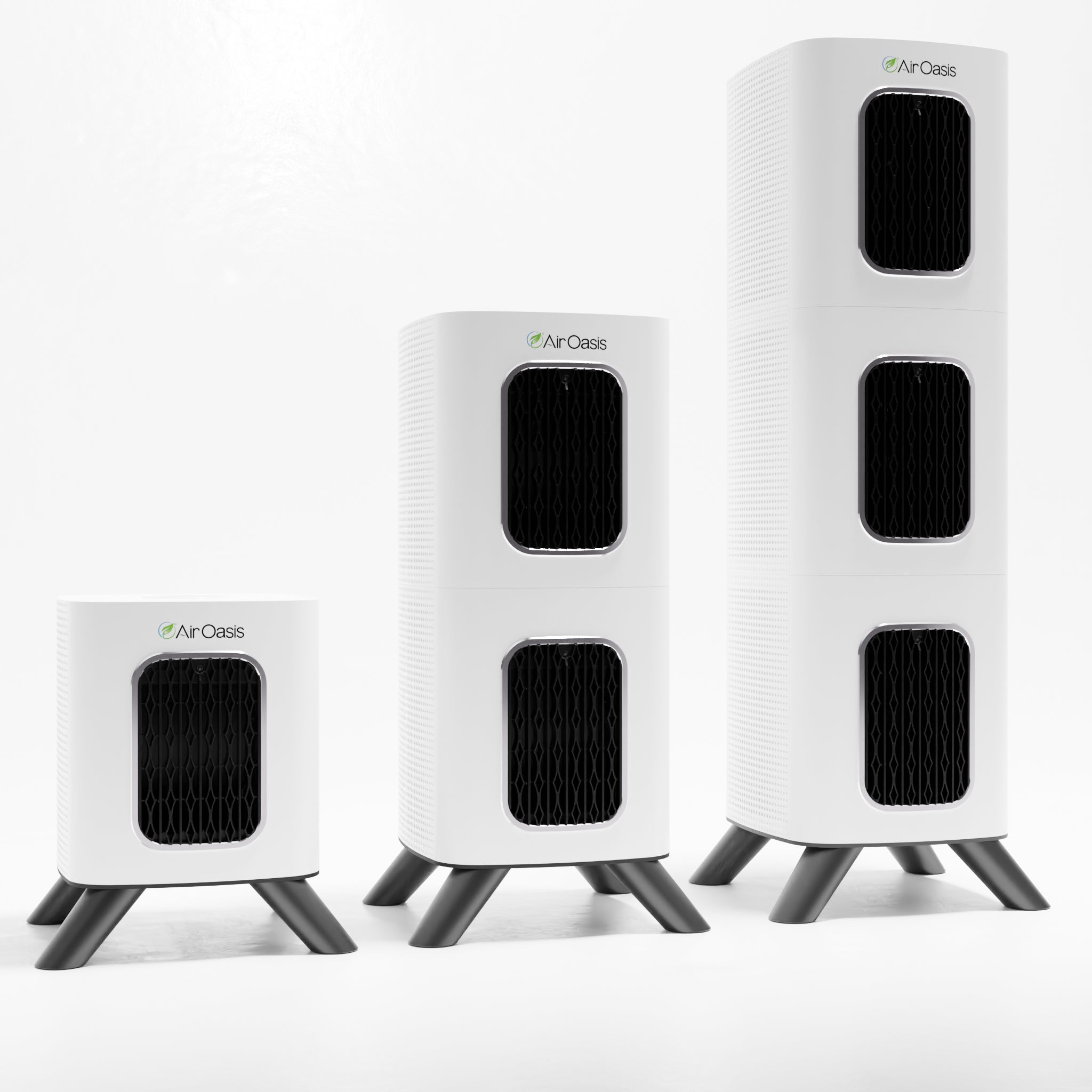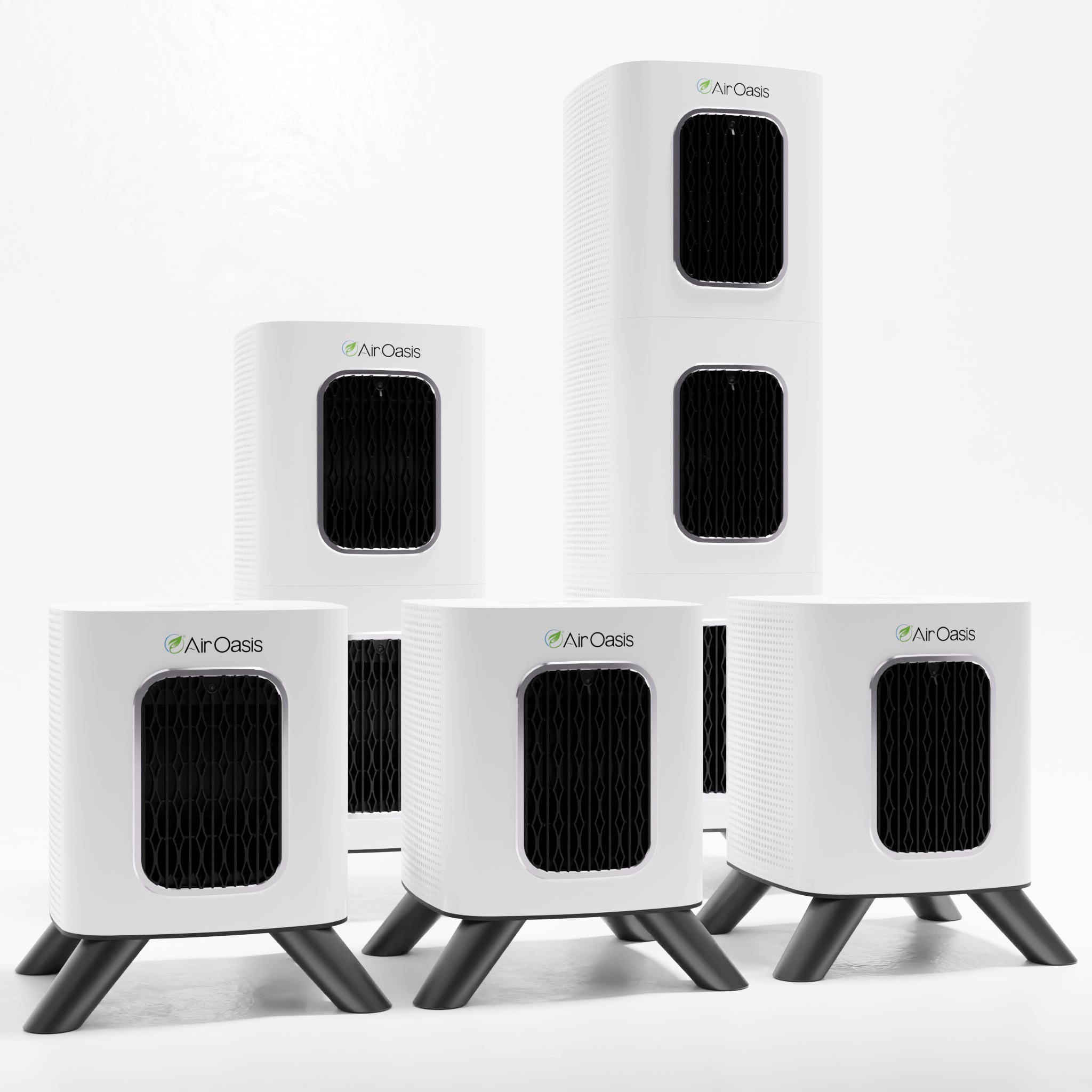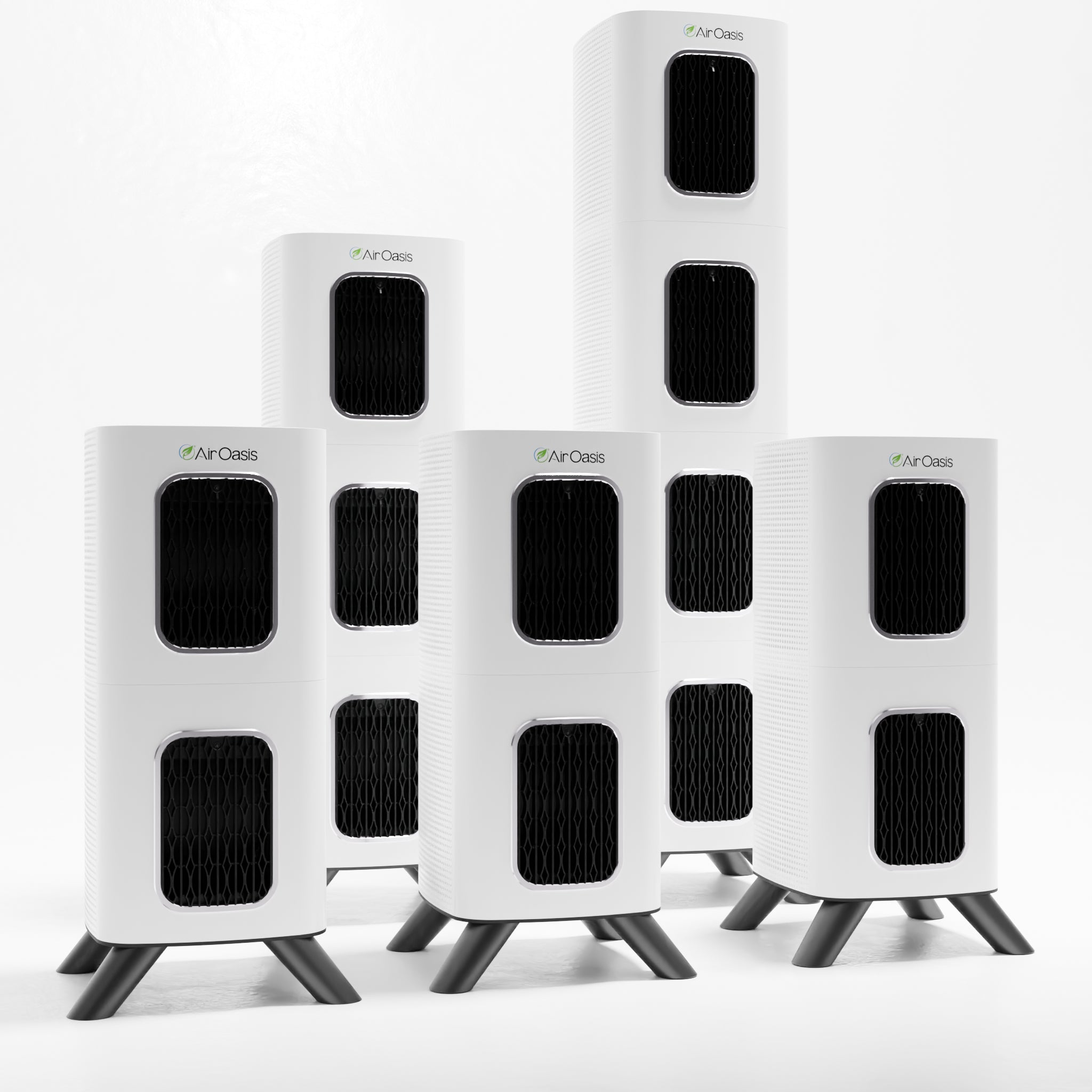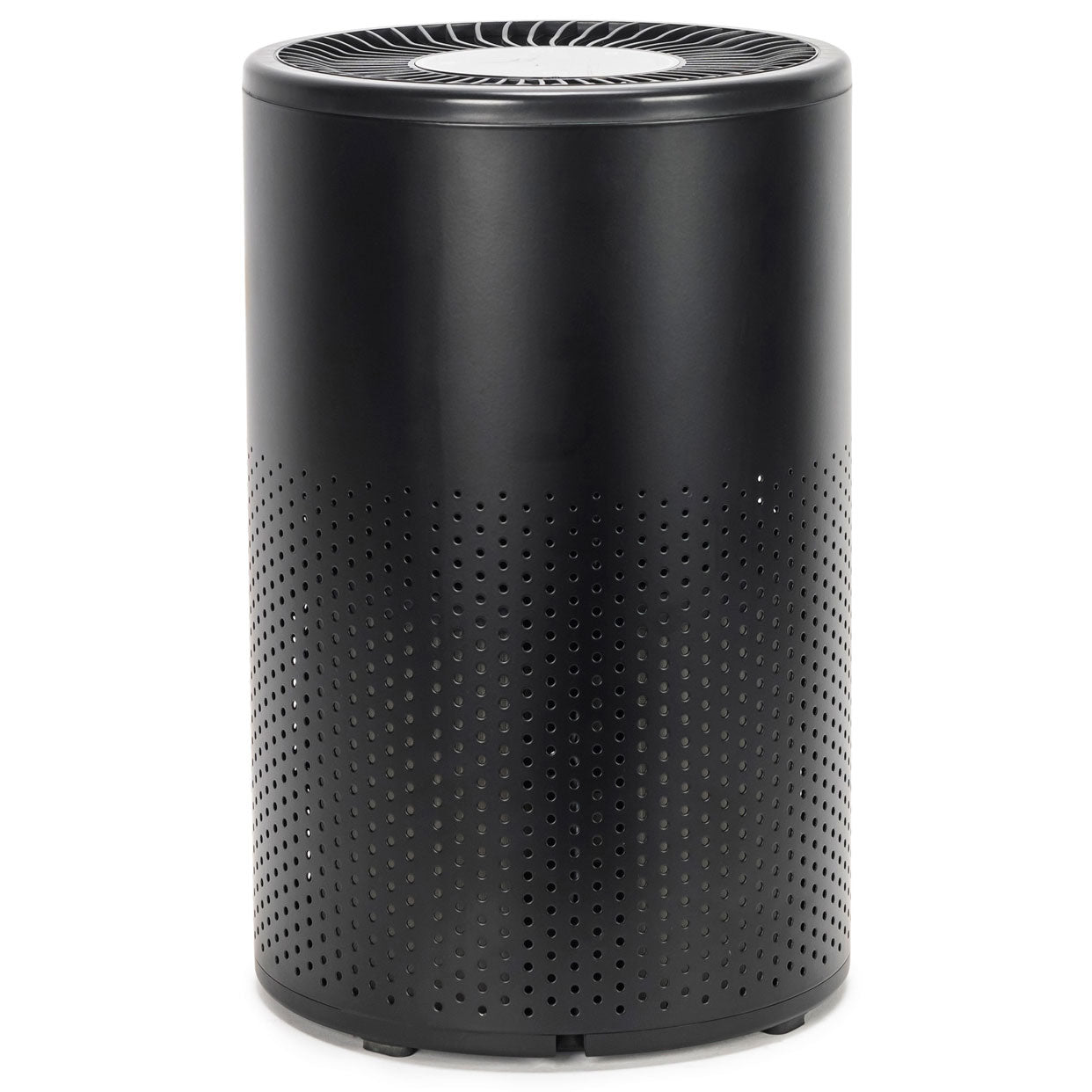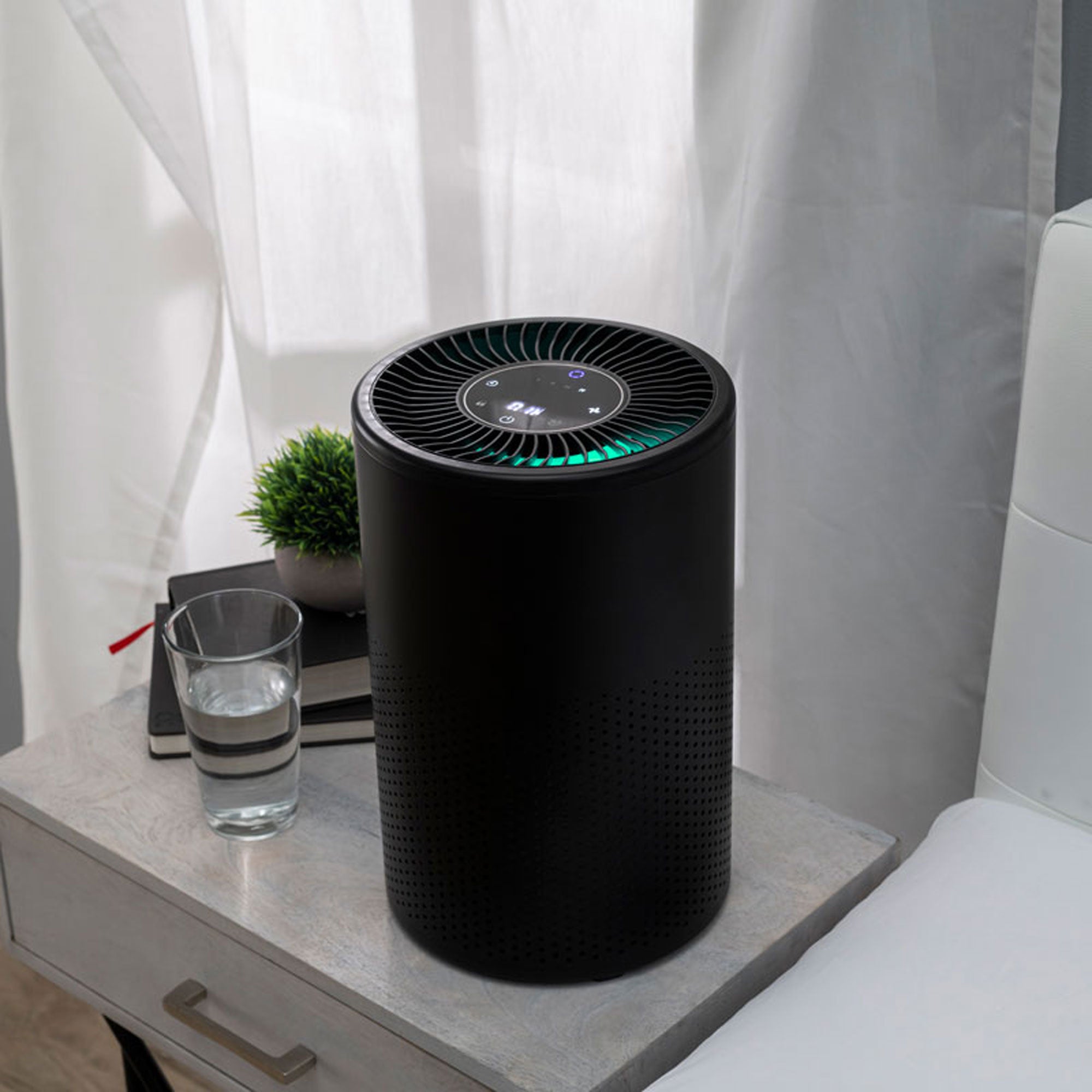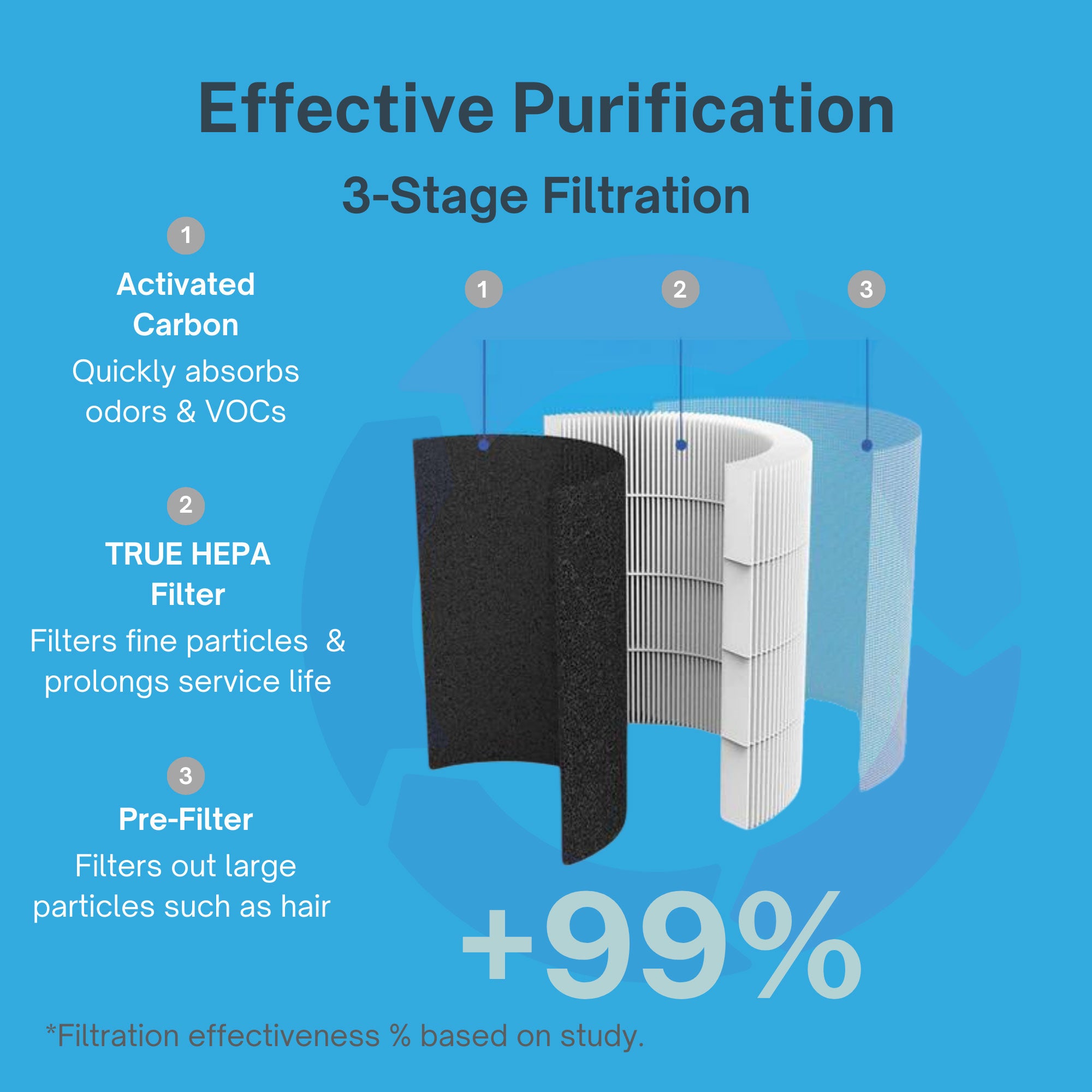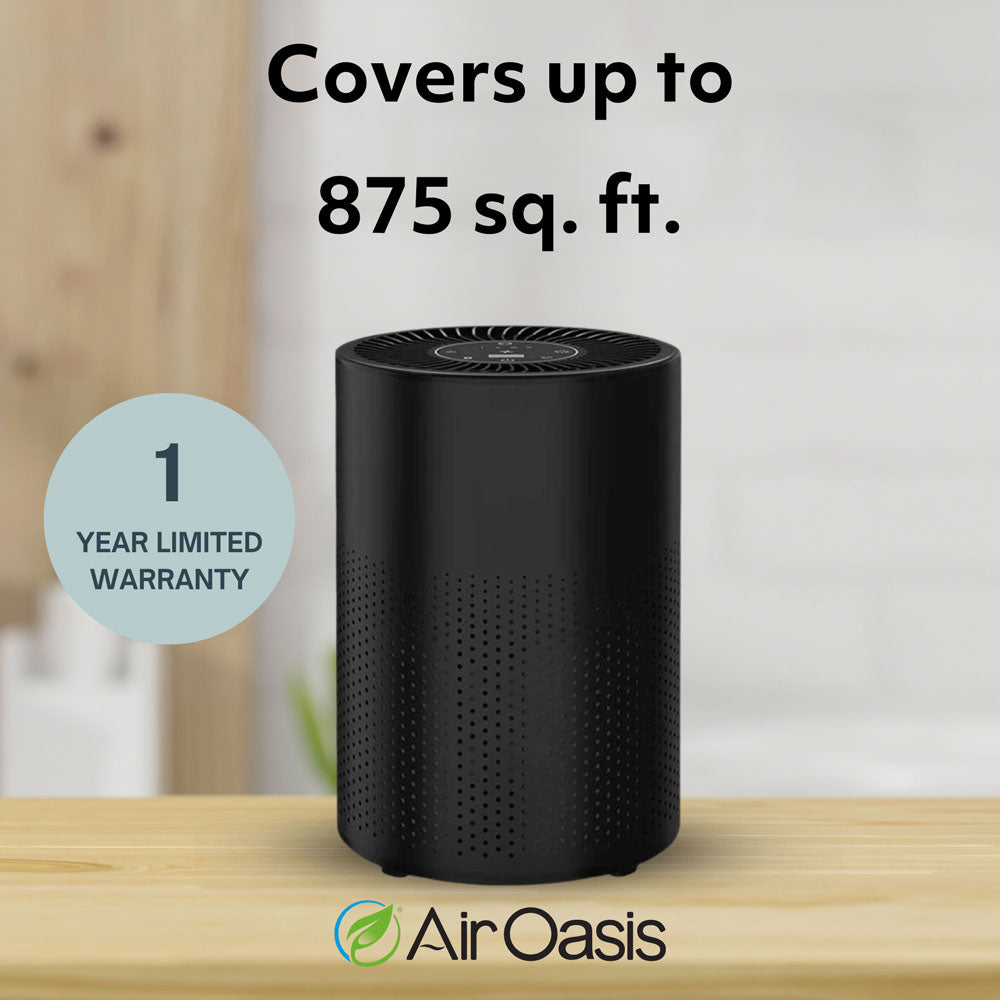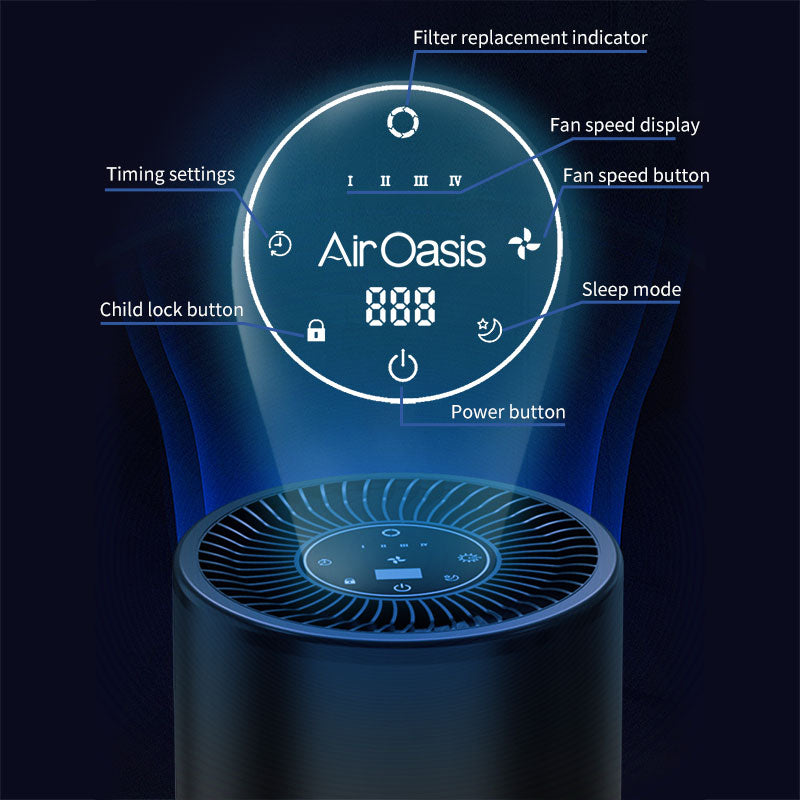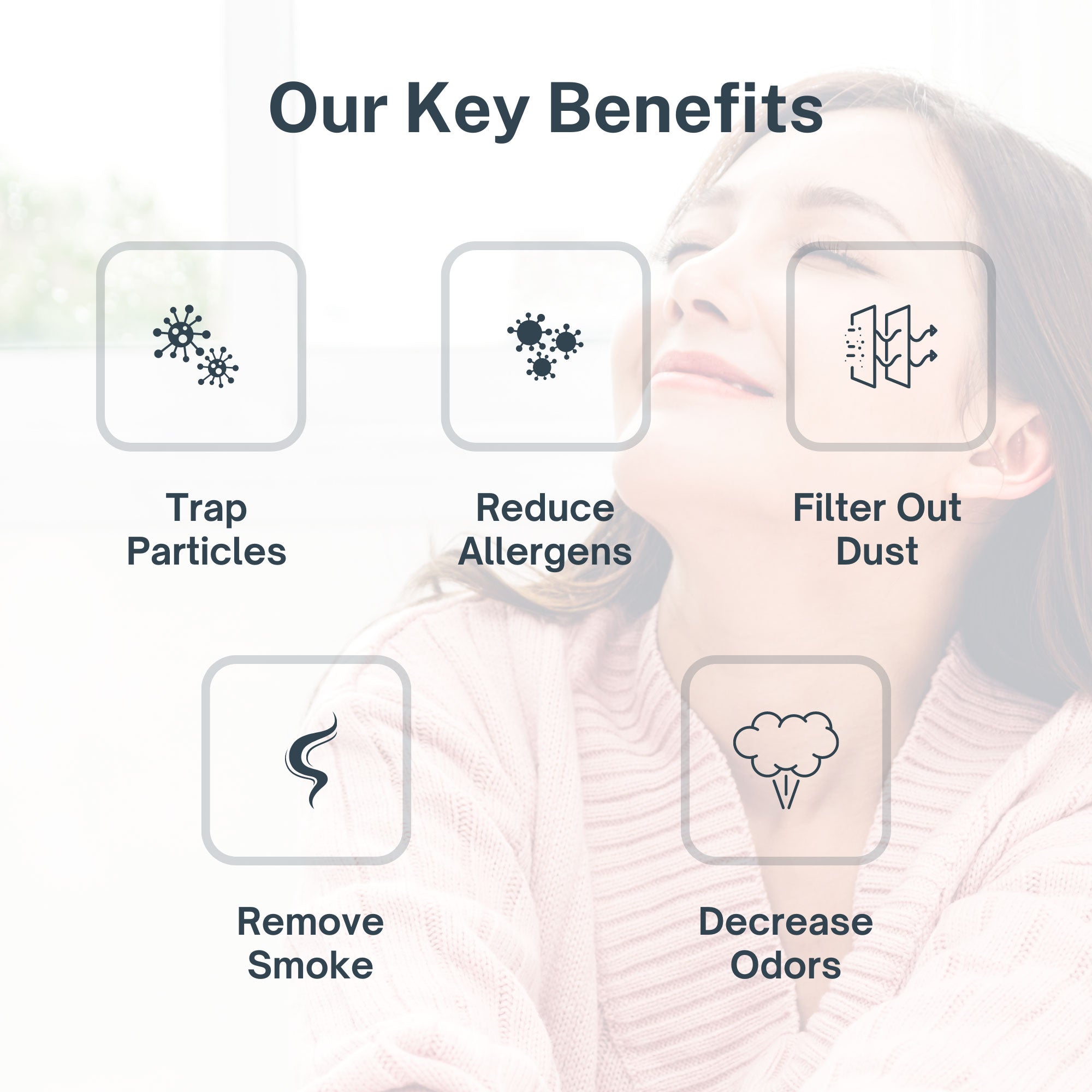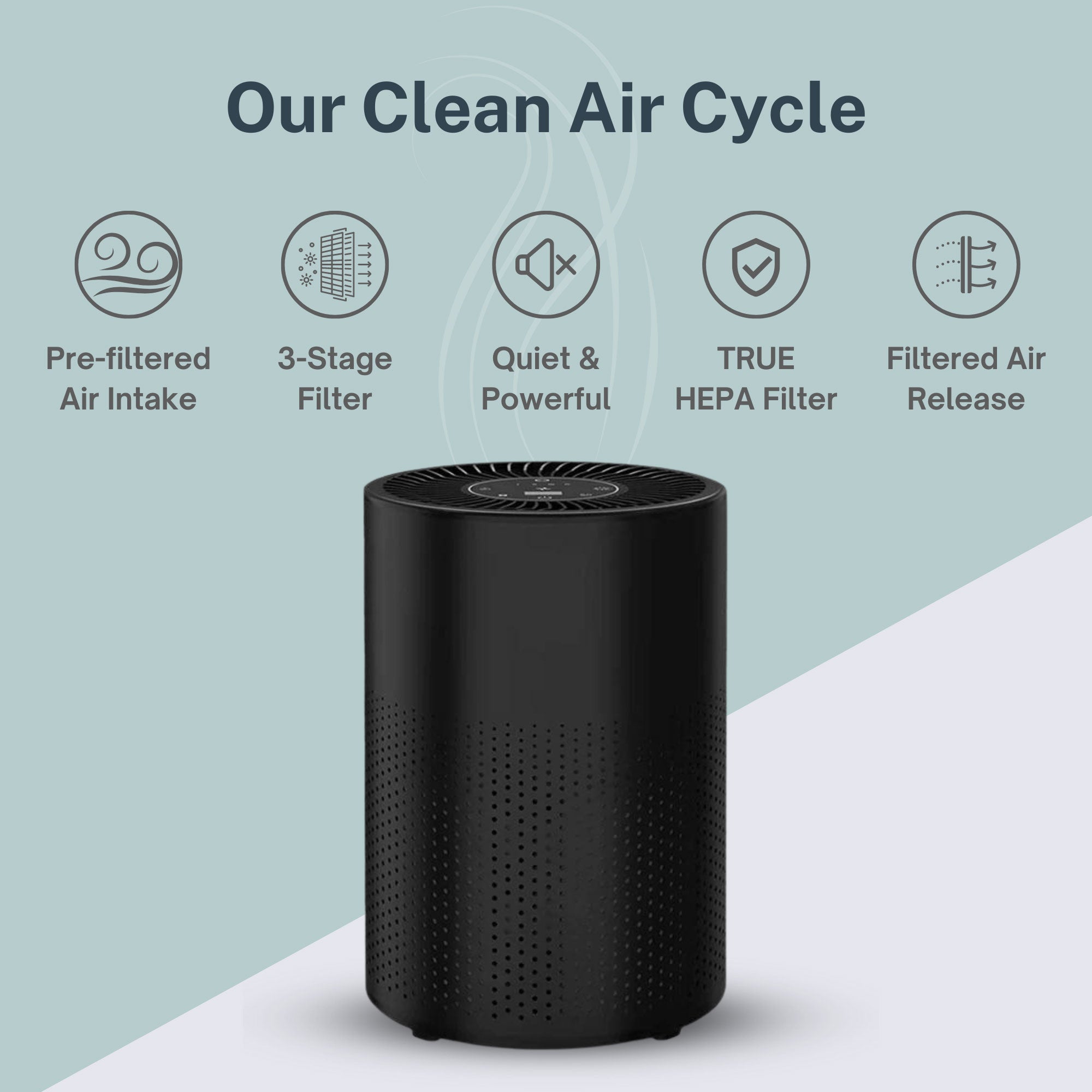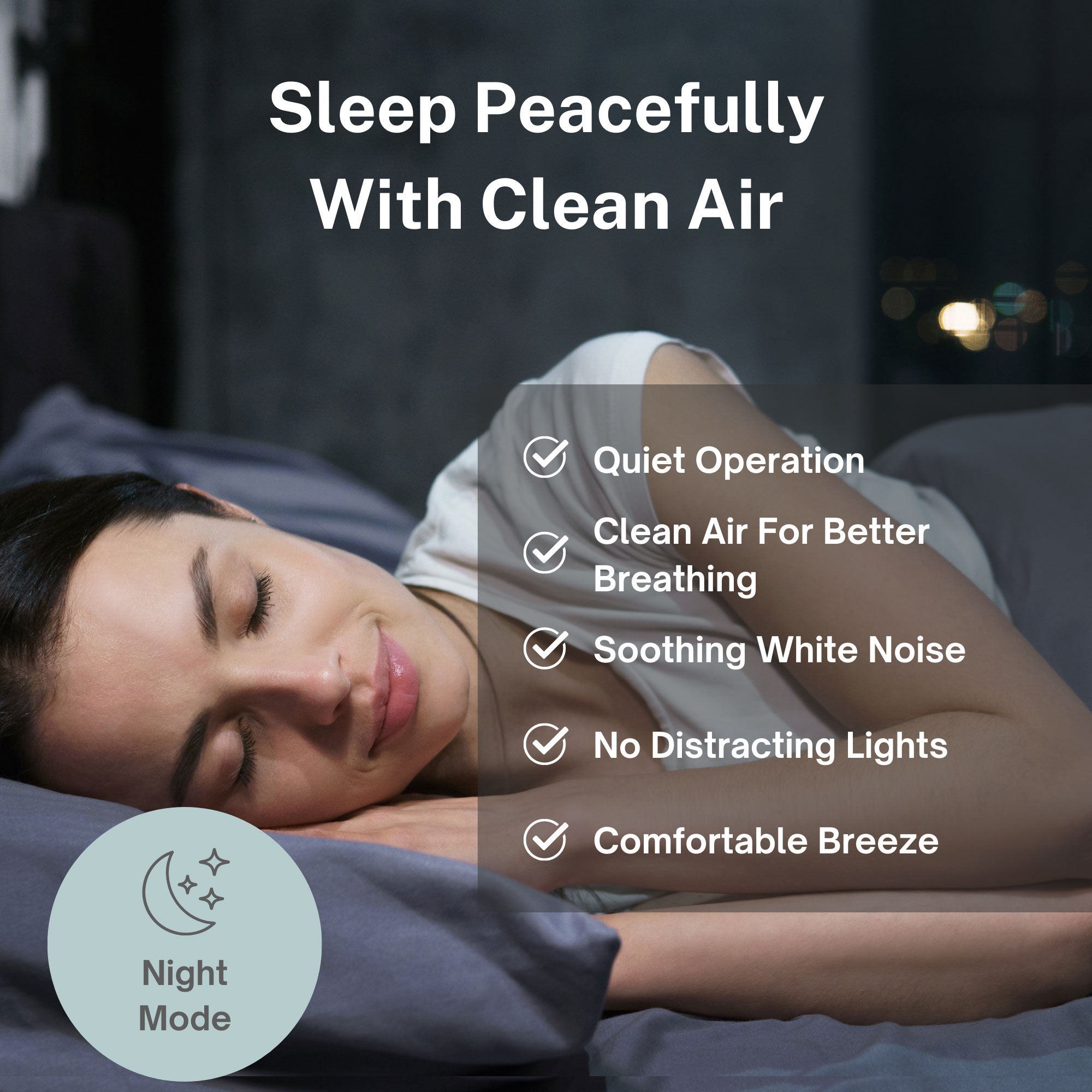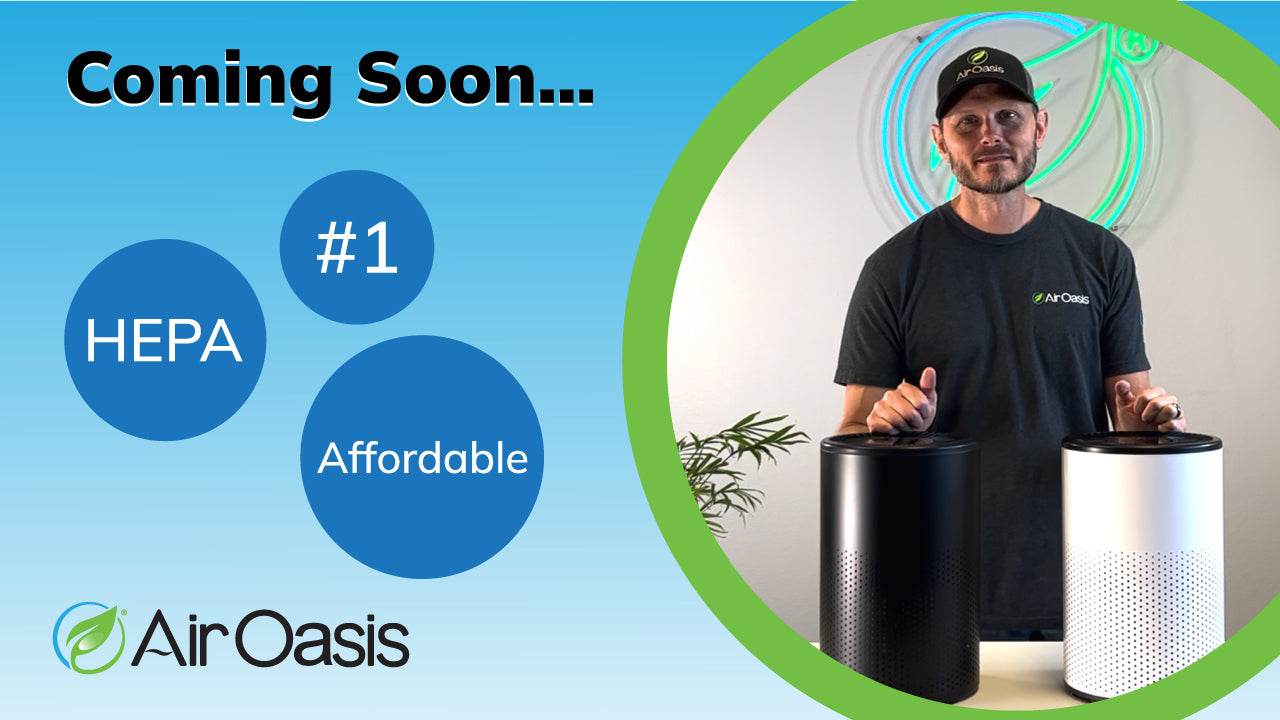Mold may serve an important role in nature, but when it takes up residence in your home, it can become a major catalyst for health problems. The risk of mold is particularly prevalent after heavy rainstorms and hurricanes, as it flourishes in areas of trapped moisture. On the heels of Hurricane Michael – and with several more weeks left of hurricane season – it’s critical to understand the dangers posed by untreated mold, and what you can do to prevent them.
Which Air Purifier Is Right for You?
Find the one that meets your specific needs by using our Air Purifier Selection tool
When Storms Strike, Mold Is Not Far Behind
Wherever water intrudes a space and becomes trapped, mold is apt to develop. As long as moisture remains unaddressed in the dark, hidden spaces of your dwelling, mold growth is inevitable. Without proper remediation, it will continue to thrive and multiply, which can damage your home and pose serious health threats.
This is why mold is especially problematic after hurricanes and heavy rainstorms. Unfortunately, mold issues can linger long after a storm subsides. In fact, some hurricanes have caused such severe mold issues that they rendered certain areas uninhabitable.
Post-Hurricane Mold Damage Linked to Health Issues
After New Orleans’ Hurricane Katrina in 2005, for example, mold infested many low-income houses. The CDC found visible mold growth in 46% of surveyed houses, and heavy mold growth in 17%.
In the wake of 2012’s Hurricane Sandy, mold issues worsened in parts of Brooklyn. A community report released four years later found that an ever-growing number of residents were still living in moldy apartments in the Red Hook neighborhood. At the time of the residential survey, 40% of respondents reported having mold.
In 2017, Hurricane Harvey hit, leaving thousands of homeowners to cope with mold abatement, flood damage and repairs. More than 136,000 homes and buildings in the region were affected by the flooding. Many residents are still seeking to remove the moisture from their homes so they can rebuild without the fear of mold infestation.
Since September of 2022, the aftermaths of Hurricane Ian continue to demonstrate some of the harmful health effects of mold-related home destruction. Numerous Florida families trying to rescue their homes from severe mold damage experienced asthma, chronic health issues, and unfortunately, even deaths.
Who’s Actually at Risk?
Yes, mold is unsightly (and, let’s just say it: gross!). But more important, untreated indoor mold can make people sick. The truth is we’re all susceptible to the health risks of mold. Breathing in mold spores can negatively affect just about anyone.
Individuals with mold-related allergies and other conditions are particularly prone to suffering from untreated mold. Some people are so sensitive to mold that they develop chronic conditions, such as Chronic Inflammatory Response Syndrome (CIRS). The Centers for Disease Control and Prevention (CDC) indicates special risk of mold to some of the following groups:
- People who are sensitive to molds can experience nasal stuffiness, throat irritation, coughing or wheezing, eye irritation or skin irritation. Those with mold allergies may have more severe reactions.
- Immunocompromised people and those with chronic lung illnesses, such as obstructive lung disease, may get serious infections when exposed to mold.
- Asthma sufferers can experience more heightened symptoms.
- Individuals susceptible to hypersensitivity pneumonitis can have symptoms related to the immune-mediated condition when exposed to indoor mold.
- Otherwise healthy adults and children may also contract upper respiratory tract illness, coughing and wheezing.
To add some perspective: 20% of the population is allergic to mold. People who are allergic to mold experience immune system overreactions and symptoms including a runny nose, scratchy throat and sneezing. This allergic illness is also known as “hay fever” or “allergic rhinitis.”
In addition, the World Health Organization reports that living or working amid mold is associated with respiratory symptoms, allergies, asthma, immunological reactions, a wide array of inflammatory and toxic responses, and increased risk of rare conditions like hypersensitivity pneumonitis, allergic alveolitis and chronic sinusitis.
Whether mold surfaces after a storm or within homes that are tightly sealed for energy efficiency in arid climates, prolonged or excessive exposure to the fungus is highly problematic. Addressing it quickly and thoroughly is paramount in reducing the risk of experiencing mold-related health dangers. The first step, of course, is seeking appropriate medical treatment.
Then, you should focus on implementing an effective plan for remediating the mold itself.
The Fight Against Mold: Eliminate and Prevent
To remediate any existing mold you may have in your home, or to prevent future occurrences, it’s crucial to understand how mold acts. In indoor environments, mold grows on moist surfaces like drywall, wallpaper, carpet, baseboards and heating, ventilation and air-conditioning systems (HVAC). As it spreads, spores develop and can be released into the air if they dry out or are disrupted.
The primary step in the remediation and prevention effort is to test for mold. First, look for telltale signs like smell (mustiness), visible traces in problem areas like bathrooms, basements, window sills, sinks and pipe fittings, and any clogged gutters or drains that may be forcing water back into your roof or basement. Then test the air in your home for the presence of mold spores, using an air quality test kit or a professional service.
Once you have your test results, the next fundamental step is to make sure your environment has low humidity levels (below 70%) and proper ventilation. To keep the area dry, it’s necessary to repair any leaks you’ve uncovered. If you’ve been hit by a hurricane, you may ultimately need to seek professional help for replacing drywall and carpet, performing more significant structural repairs or addressing water damage and mold remediation.
Last (but certainly not least) is ensuring that your air is clean, which is easy to accomplish with a high-quality air purifier. This final step is integral to ridding your air of the mold you’ve found and preventing the spread of mold spores and other contaminants – even after the professionals have left your home. A top-rated air purifier can be life-changing for people who suffer from chronic health issues related to mold or the biofilm left after a cleanup. Ionizing purifiers actively seek out and address mold in the air and on surfaces. Some of the best ones even combine True HEPA and carbon filtrations with ionization.
Making Clean Indoor Air a Priority
In the tragic aftermath of a hurricane, it’s common to become so consumed by other challenges that addressing mold problems is overlooked. Mold is an issue that’s easy to miss, and unfortunately, it has the potential to linger years after a hurricane hits. But the health dangers are too great to ignore.
Now’s the time to identify your mold risks, take action to remediate and prevent them, and prioritize the cleanliness of the air you breathe. Your health and well-being are worth it.
From now until the end of 2018, Air Oasis will donate a percentage of our sales to World Vision to help those affected by recent hurricanes. For assistance choosing the right air purifier to support your mold remediation and prevention efforts, use our simple product selection tool or reach out with any questions you may have.

